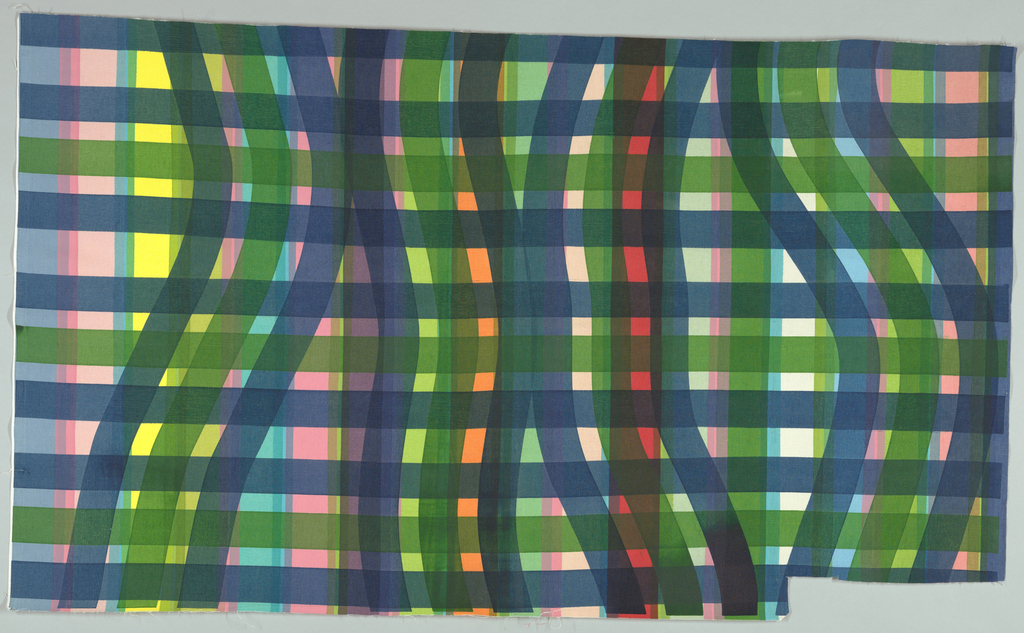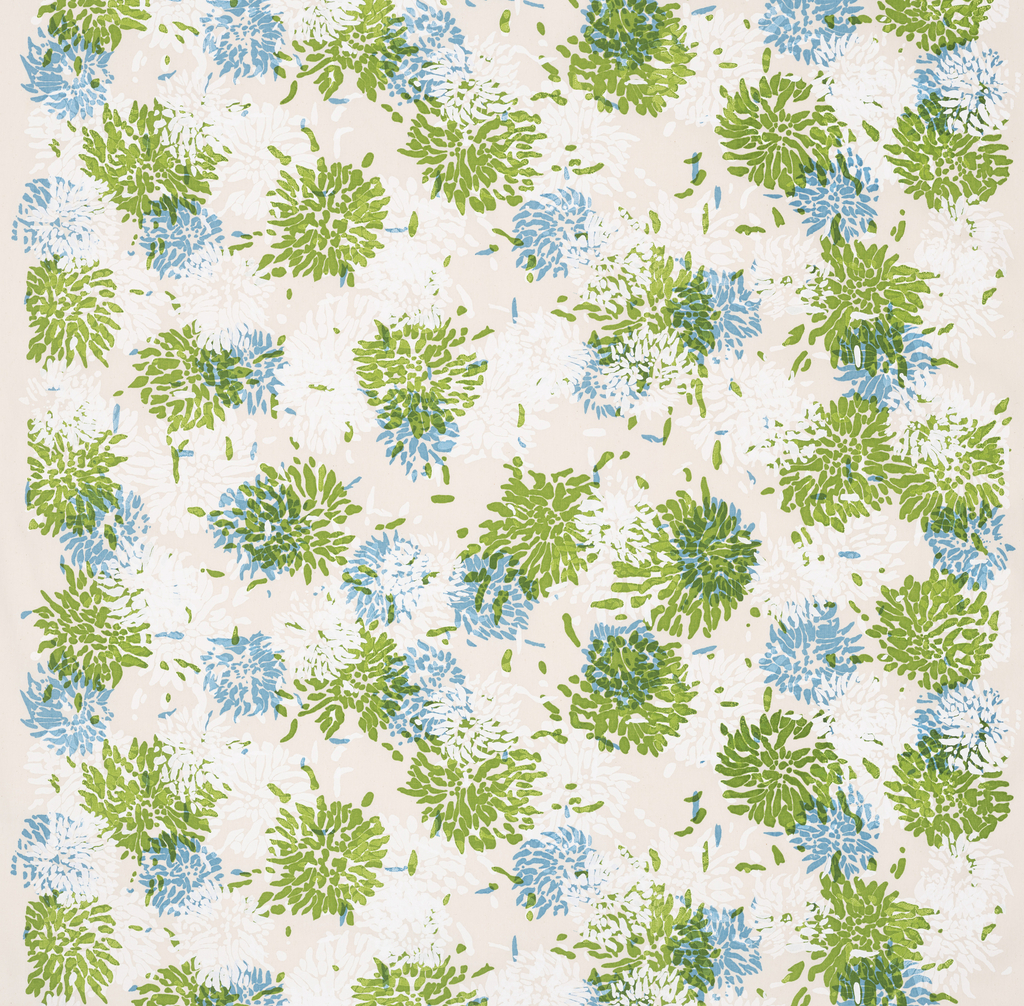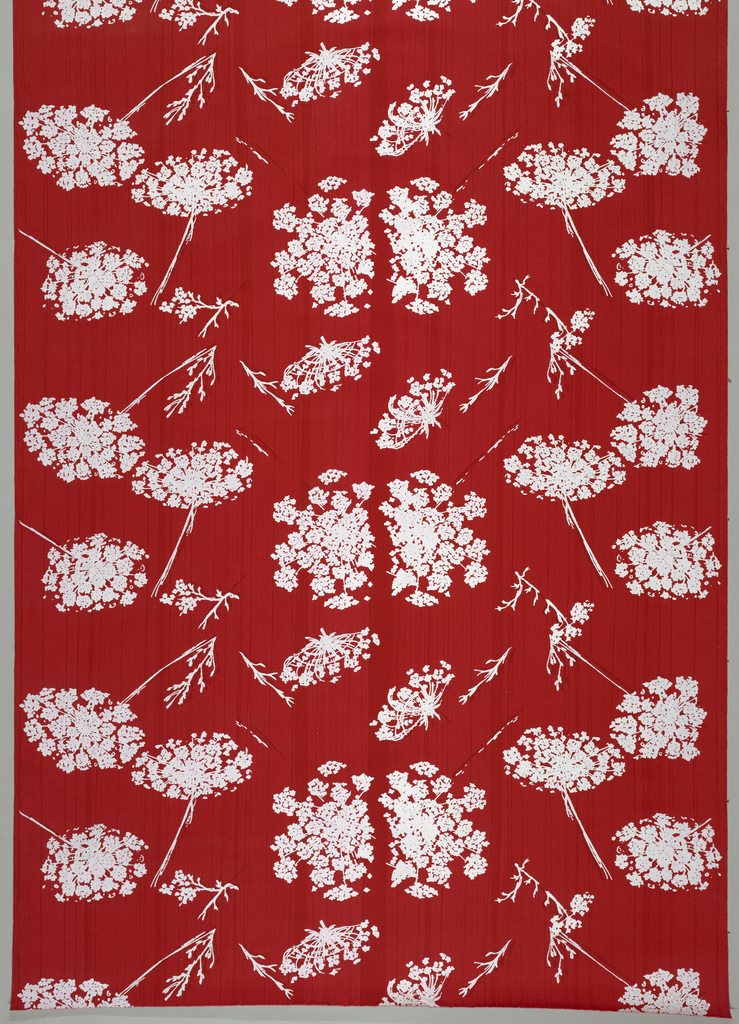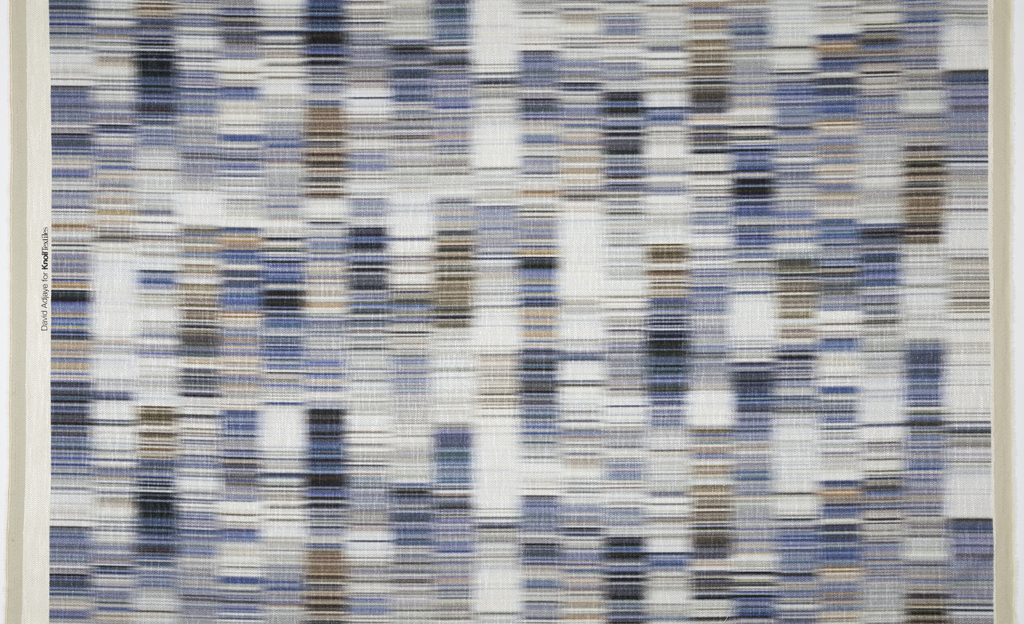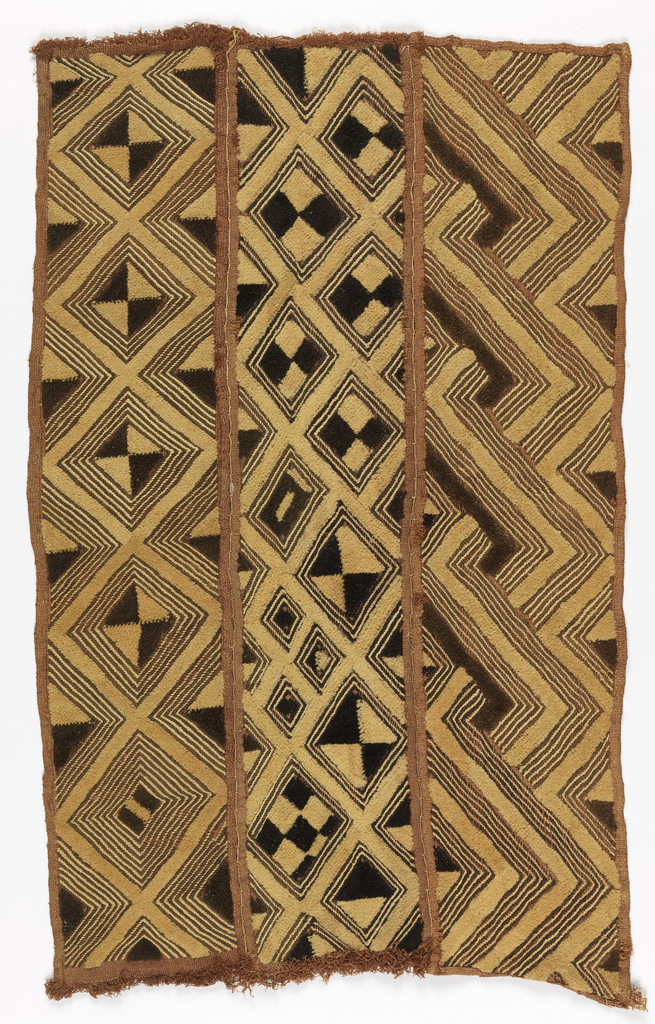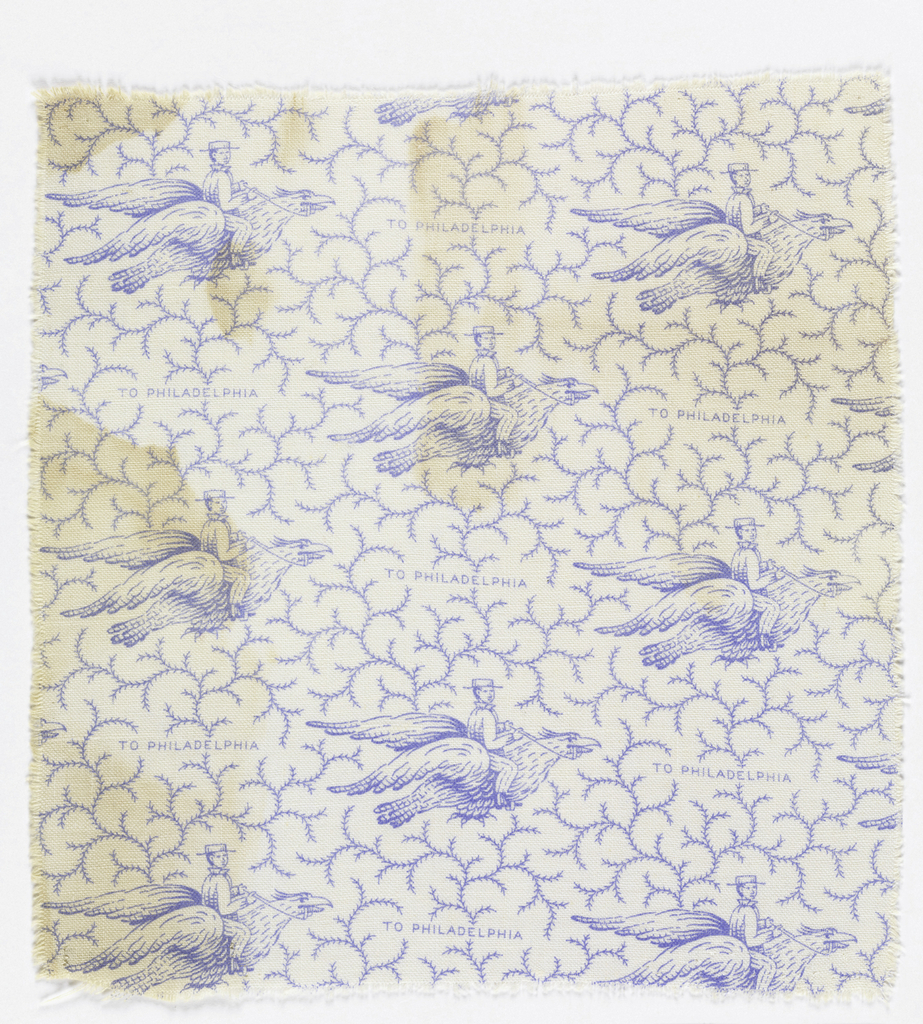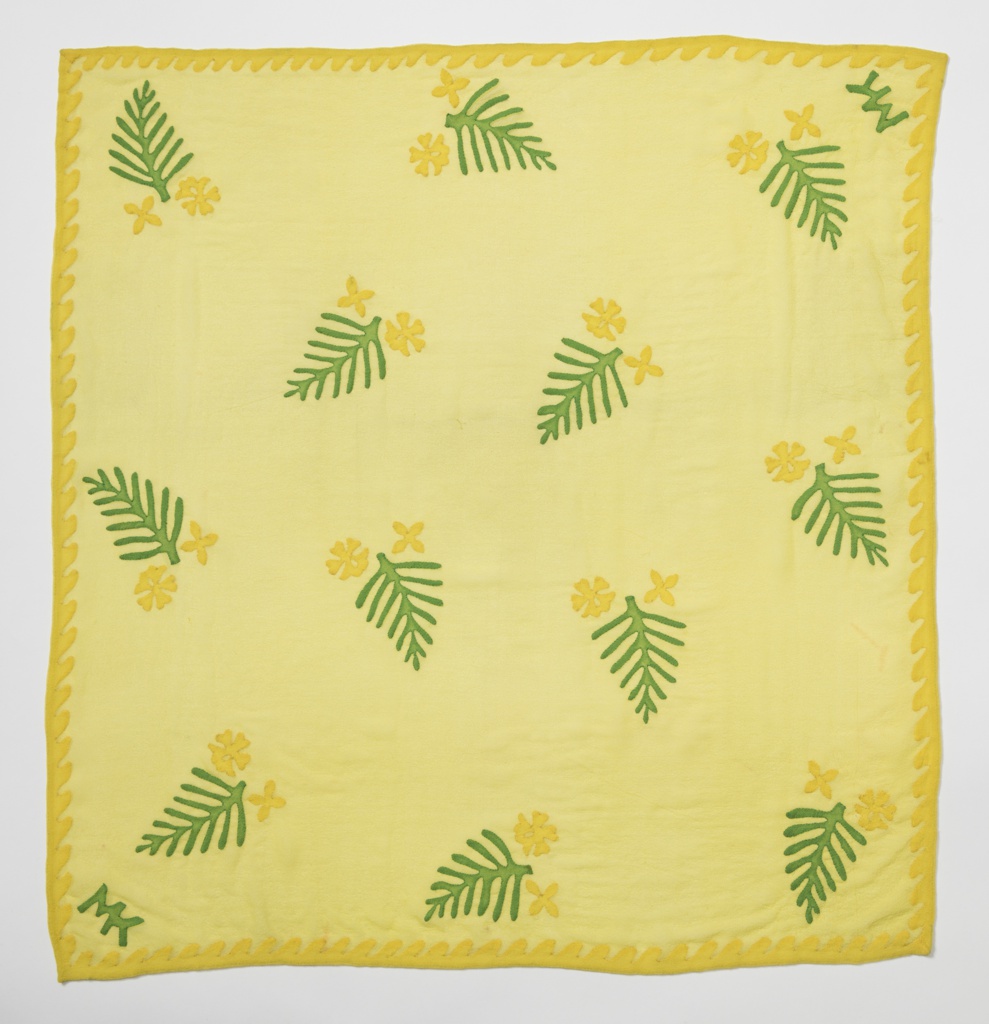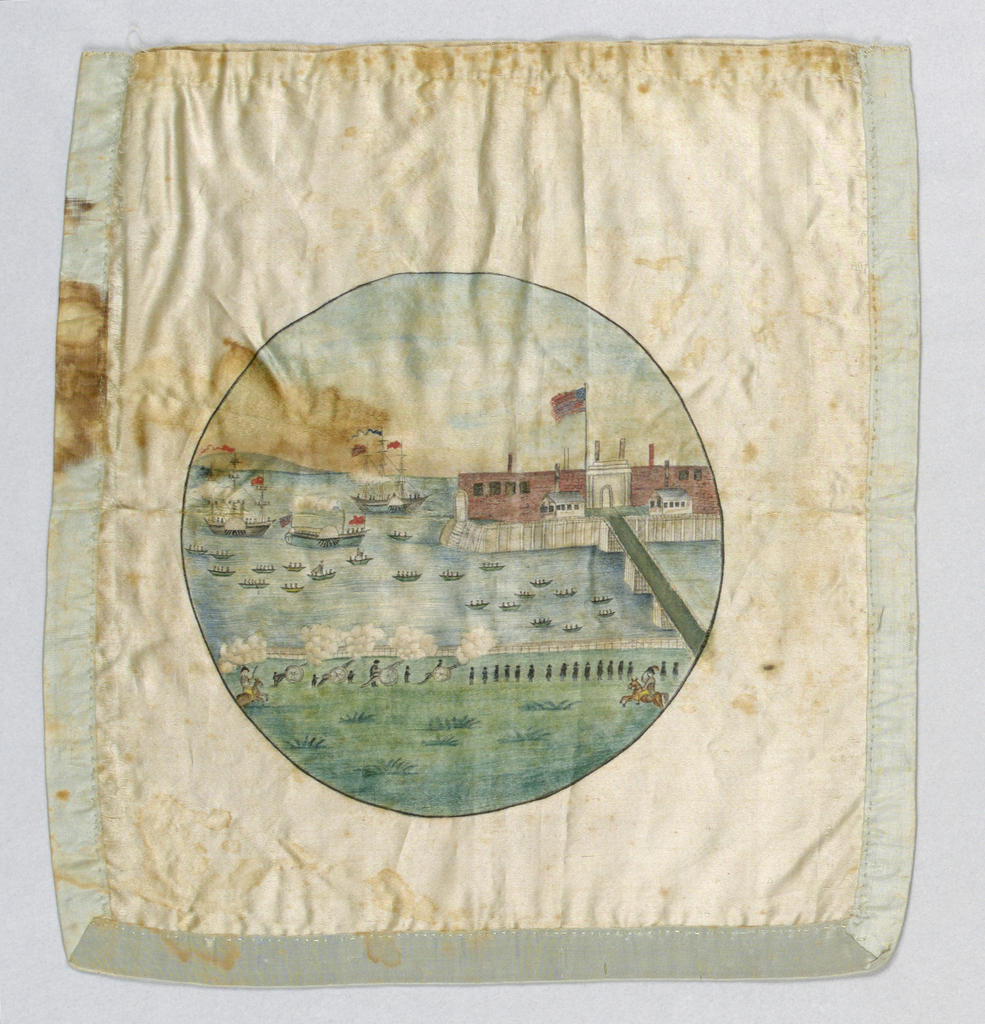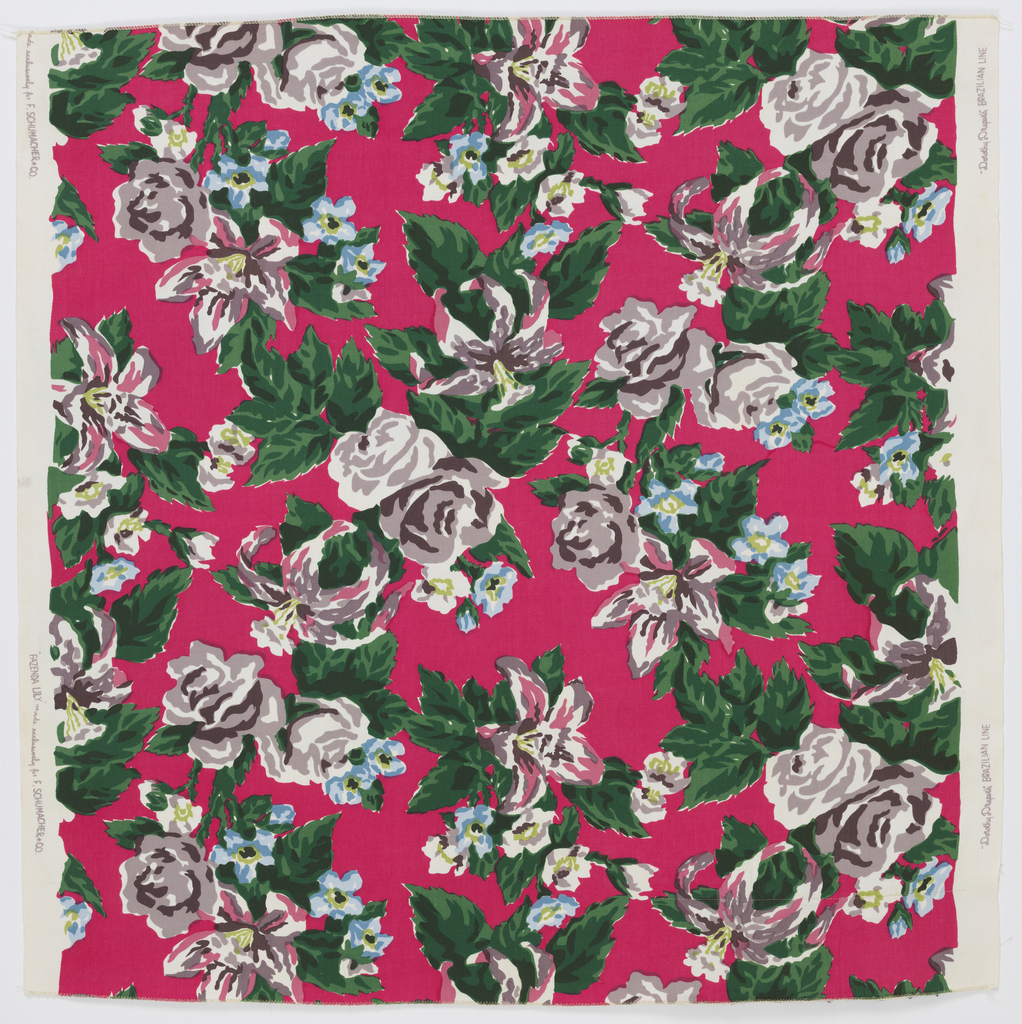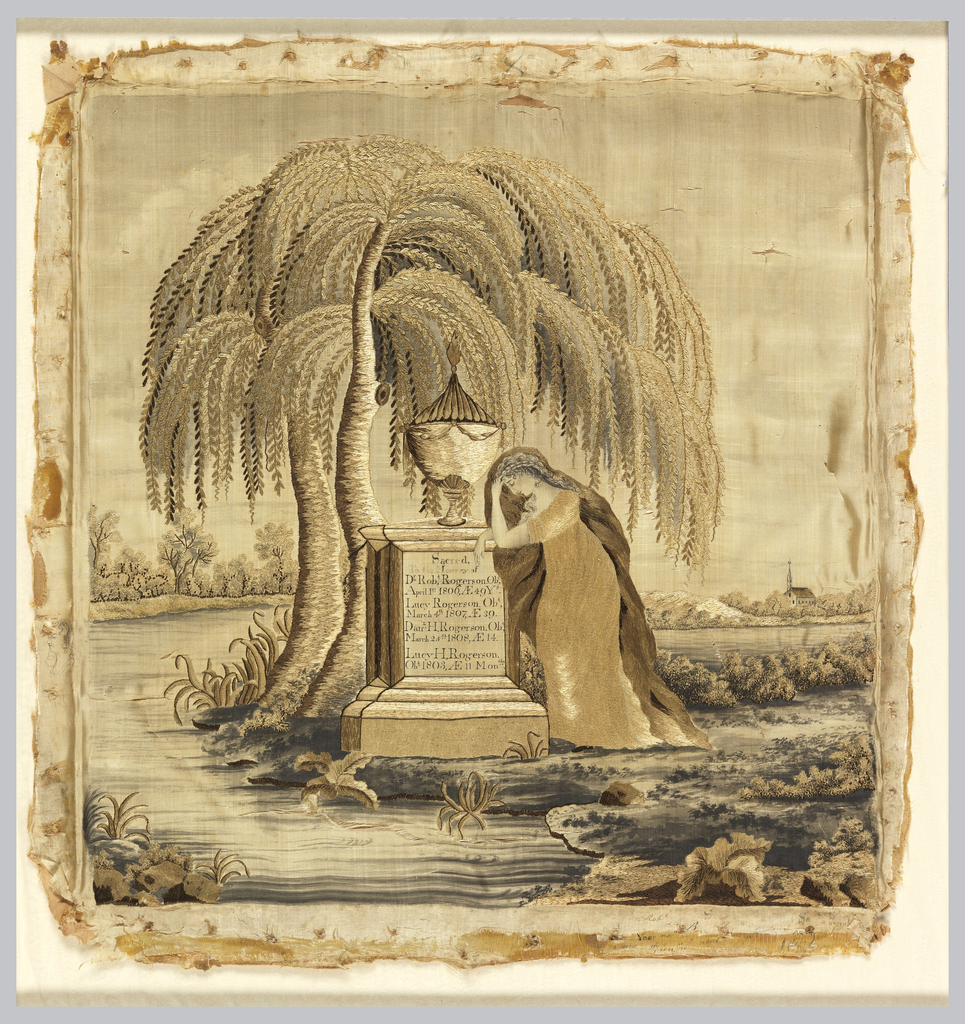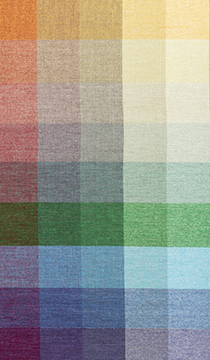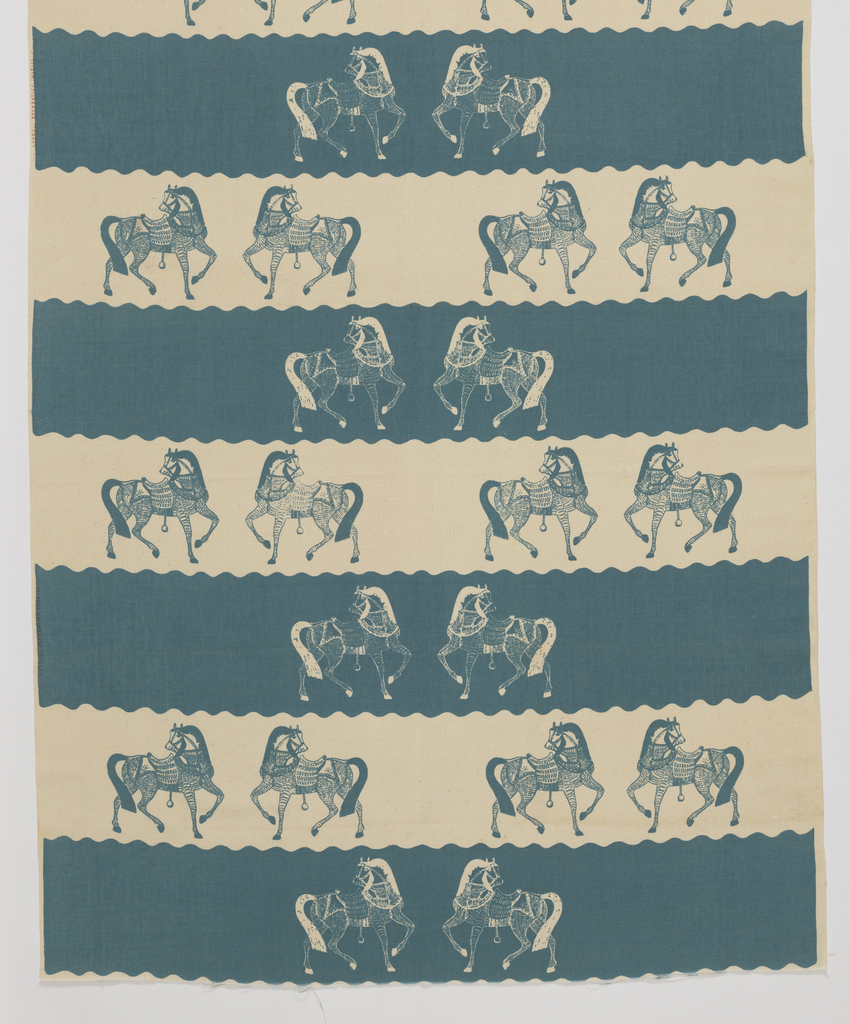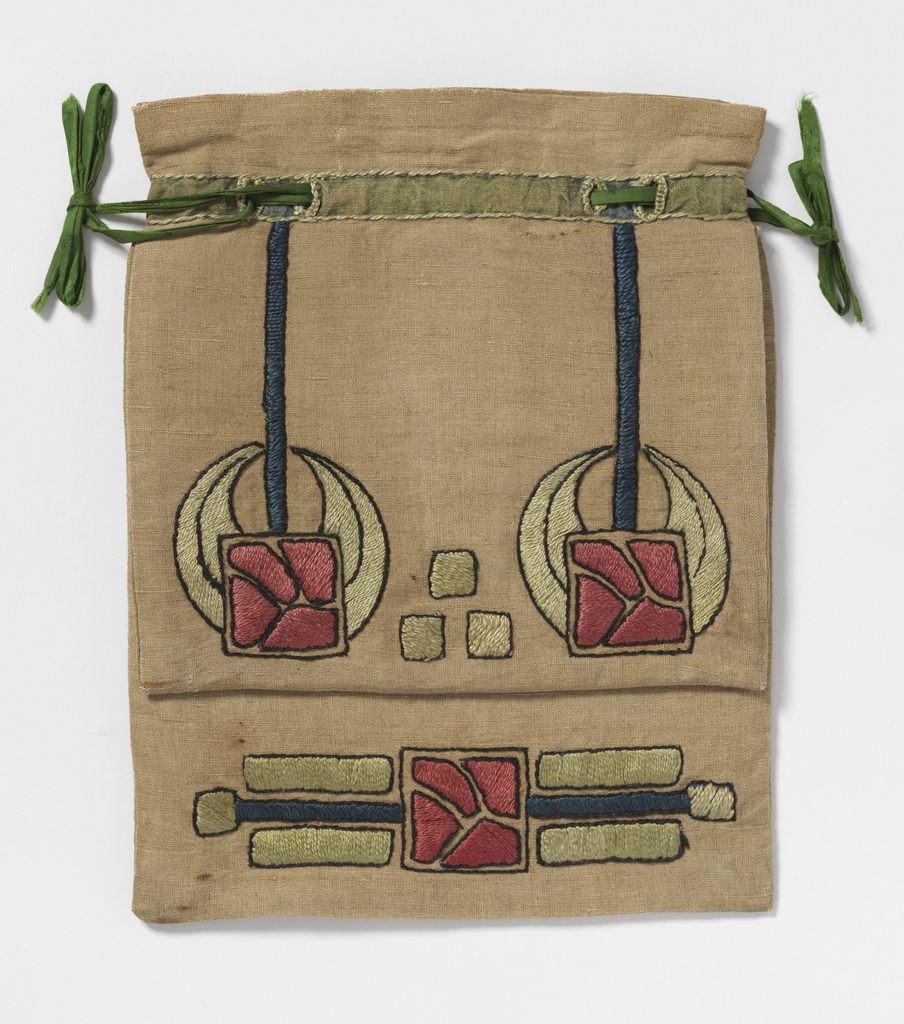In celebration of Women’s History Month, March Object of the Day posts highlight women designers in the collection. From the 1950s through the 1970s, husband-and-wife designers D.D. and Leslie Tillett designed and printed custom fabric yardage in their studio on Manhattan’s Upper East Side under the name “House of T Fabrics.” Their fresh and original...
Chrysanthemum could be considered the signature print of House of T Fabrics. It was one of the studio’s best-selling designs for over forty years. House of T was founded on New York’s Upper East Side by the husband-and-wife design team of Leslie and D.D. Tillett. From their combined living and working space on East 80th...
Queen Anne’s Lace recalls the simple charm of a photogram, an early photographic process where objects, frequently botanical specimens, were placed directly on a photosensitive paper and exposed to sunlight. In fact, the detail captured in this floral design was probably created by placing the flowers directly on the photographic emulsion used to create the...
In 2015, British architect David Adjaye, who had recently completed the design of the acclaimed National Museum of African American History and Culture in Washington, was invited to curate an exhibition for the museum’s Selects series. Adjaye, who was born in Tanzania and raised in Ghana, has traveled to nearly every African nation and chose...
The sophisticated visual culture of the Kuba kingdom has been noted since the first explorers visited the region. Abstract geometric patterning is deployed across all media, from scarification of the skin to textiles, basketry, pottery, and even the woven walls of noble dwellings. The devices of color alternation, contrast of surface texture, and play of...
Author: Virginia Pollock This curious textile was manufactured in the 1870s by American Print Works which was located in Fall River, Massachusetts. Featuring a motif of a figure taking flight on the back of an eagle, the intended destination of the traveler is revealed with the repeated phrase “TO PHILADELPHIA.” In 1876, many individuals were...
Mariska Karasz’s fashions for women were clean, simple, and modern in cut, but were made unique, charming, and unusual through the addition of appliquéd and embroidered patterns inspired by traditional folk embroideries of her native Hungary. “Dateless is Mme. Karasz’s own description of the evening and afternoon frocks and hostess gowns that are classically princess...
Author: Virginia Pollock While this hand painted silk bag may seem like a simple fashion accessory, in reality it marks one of the most celebrated events in 1824 in the city of New York. On the backside of the purse there is an inscription that reads: “Landing of General Lafayette / at the Castle Garden...
During World War II, commercial construction in the United States came to a standstill, but Dorothy Draper received a plum commission to design the interiors of Cassino Hotel Quitandinha, in Petrópolis, a mountain resort outside Rio de Janeiro, Brazil, designed by Italian architect Luis Fossatti and constructed by entrepreneur Joaquim Rolla. At the time it...
To a modern eye, mourning samplers sometimes seem insufficiently personal or idiosyncratic to represent genuine grief, relying as they do on stock motifs—the woman in classical dress leaning in a posture of grief against the tomb, under a weeping willow. In fact, mourning was perhaps more fashionable than emotional; following the death of George Washington...
Author: Madelyn Shaw For several years, I have been immersed in the subject of wool as a wartime resource. The global trade in wool grew exponentially in the 19th century, fed by the opening of new regions to sheep farming, the industrialization of the production of wool yarns and textiles, and the seemingly continuous need...
As research for the exhibition Saturated: The Allure and Science of Color (May 11, 2018–January 13, 2019) curators interviewed color specialists working in diverse industries and fields, from fashion forecasting to early childhood education. Careers in Color invites these specialists to explain what their job entails and how their love of color led to a...
Marguerita Mergentime is noted for her innovative use of text as a decorative element, and among her many sources of inspiration were books of calligraphy and penmanship. The “Spencerian” of the title refers to Spencerian script, a cursive writing style developed by Platt Rogers Spencer and promoted through his 1866 book, Spencerian Key to Practical...
A work bag or sewing bag was a soft cloth bag used by women to store their embroidery implements and supplies, and small, unfinished projects. The bags were a common feature of feminine life from the 17th through 19th centuries, but by the time this bag was embroidered, in the early 20th century, few women...
Author: Andrea Aranow In celebration of the third annual New York Textile Month, members of the Textile Society of America will author Object of the Day for the month of September. A non-profit professional organization of scholars, educators, and artists in the field of textiles, TSA provides an international forum for the exchange and dissemination...
